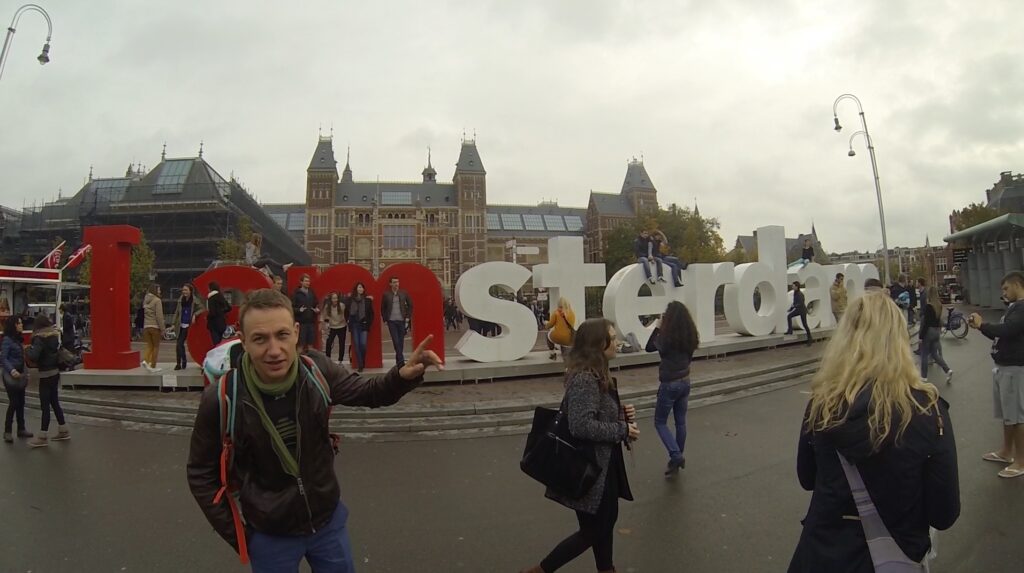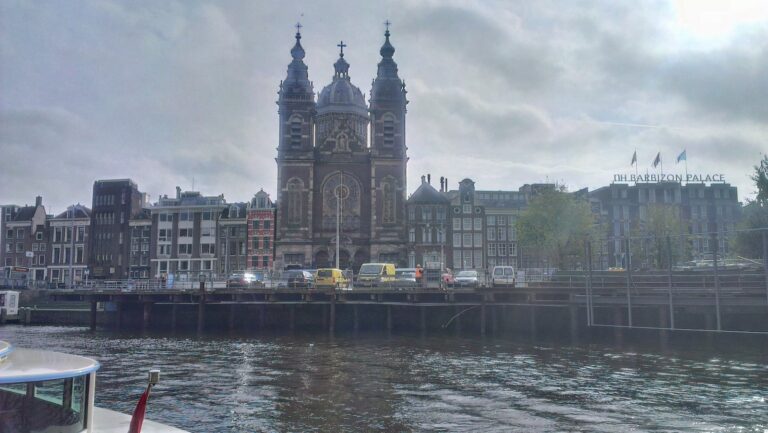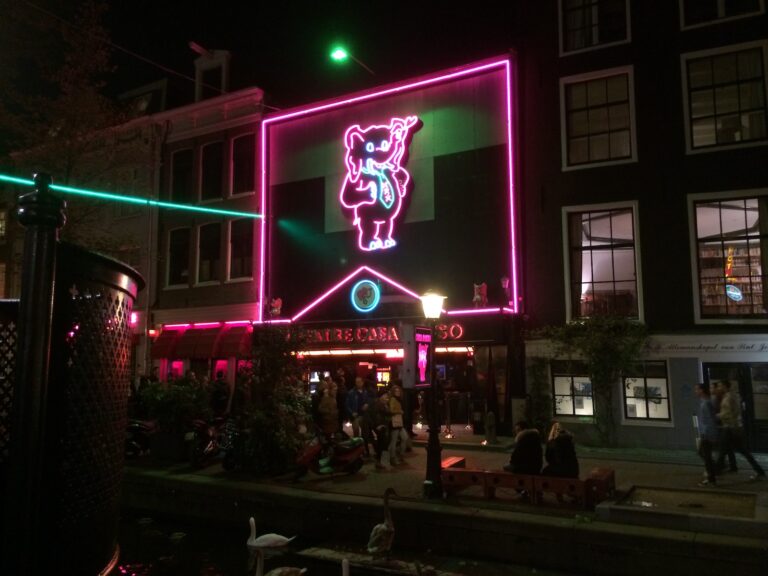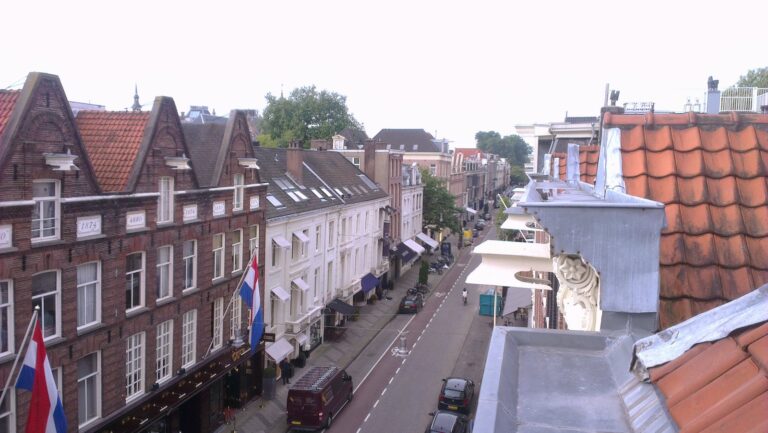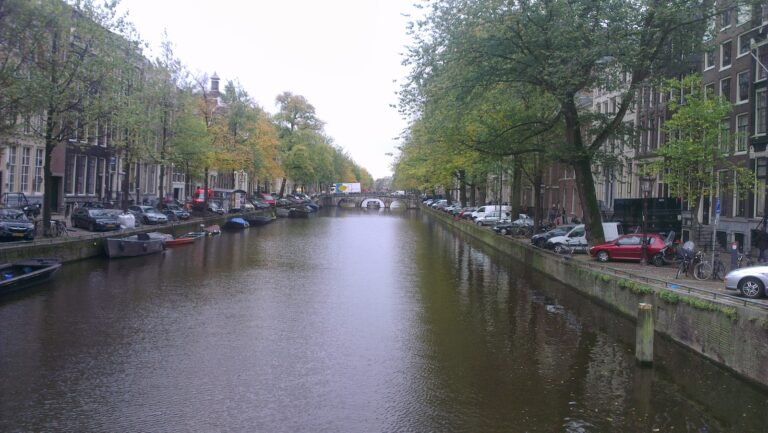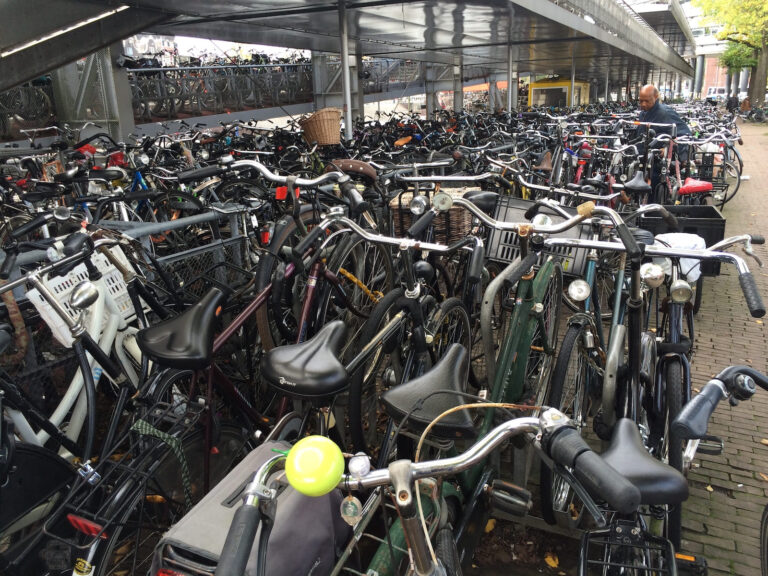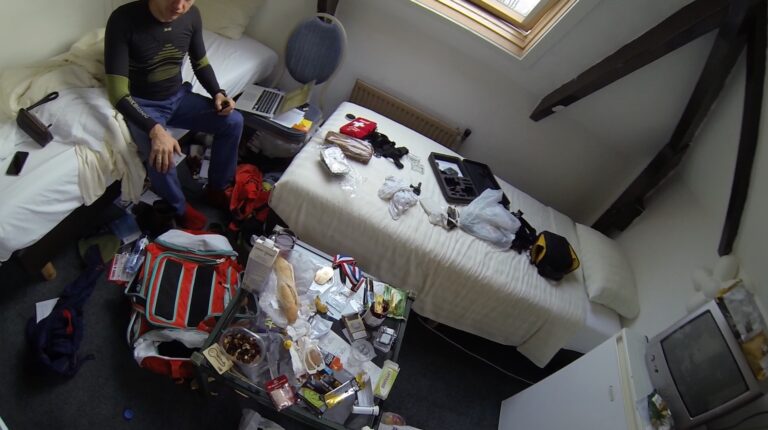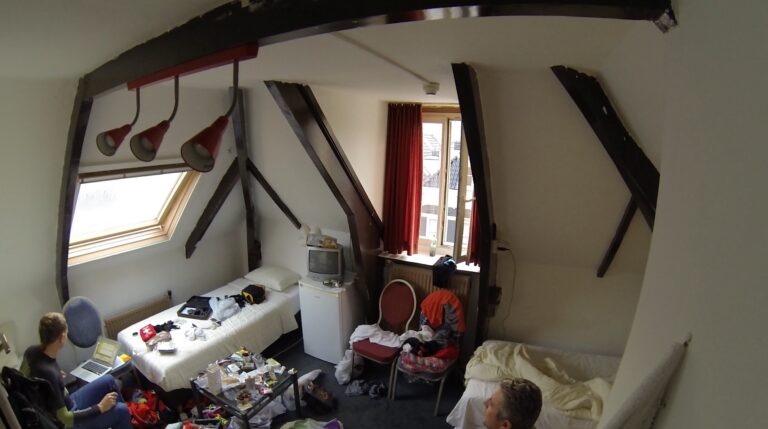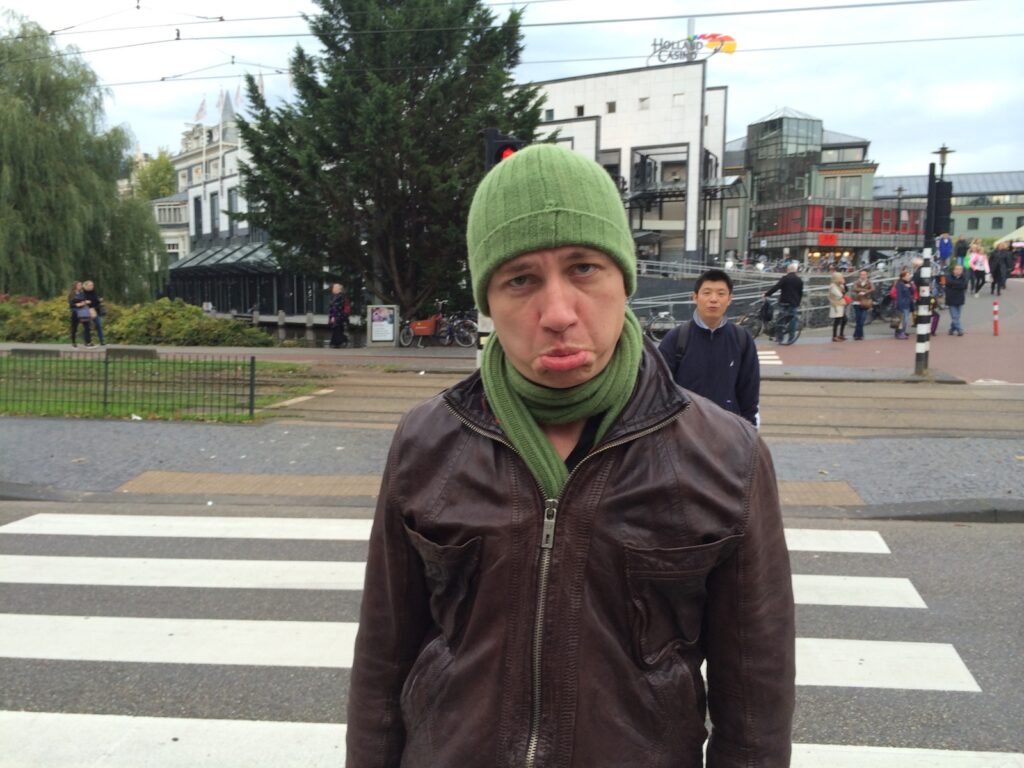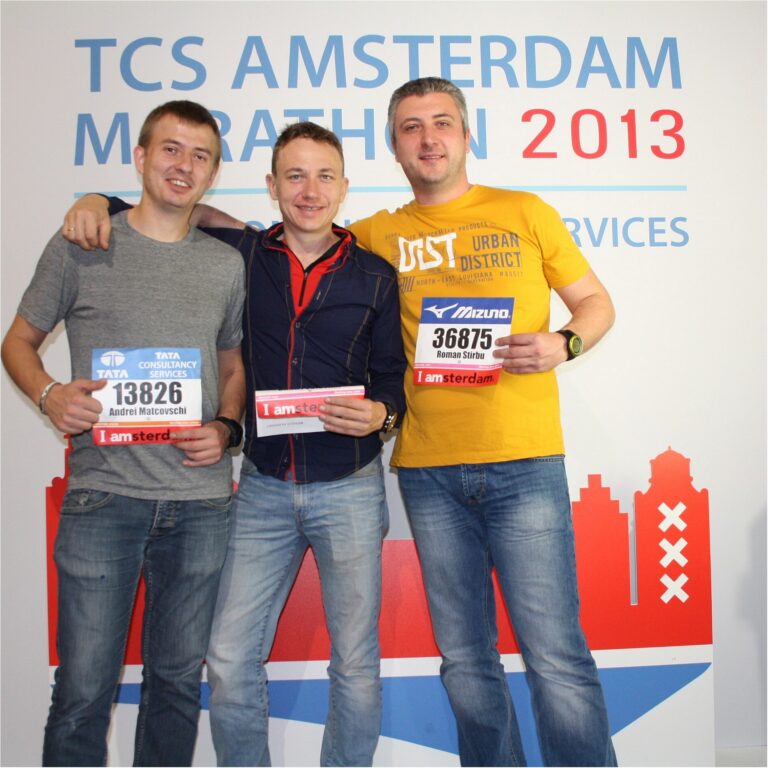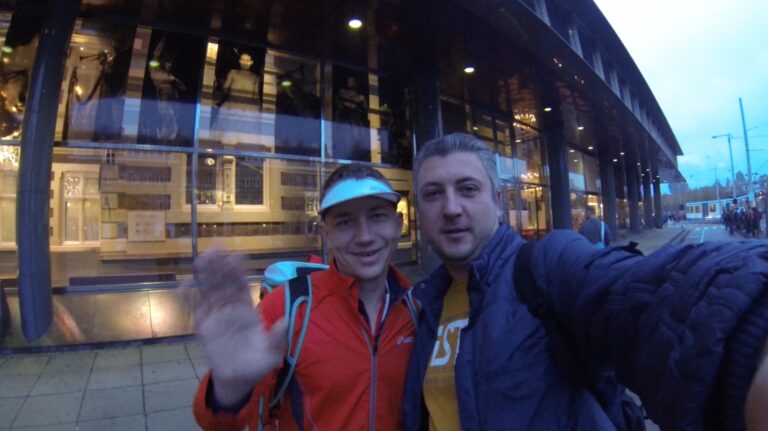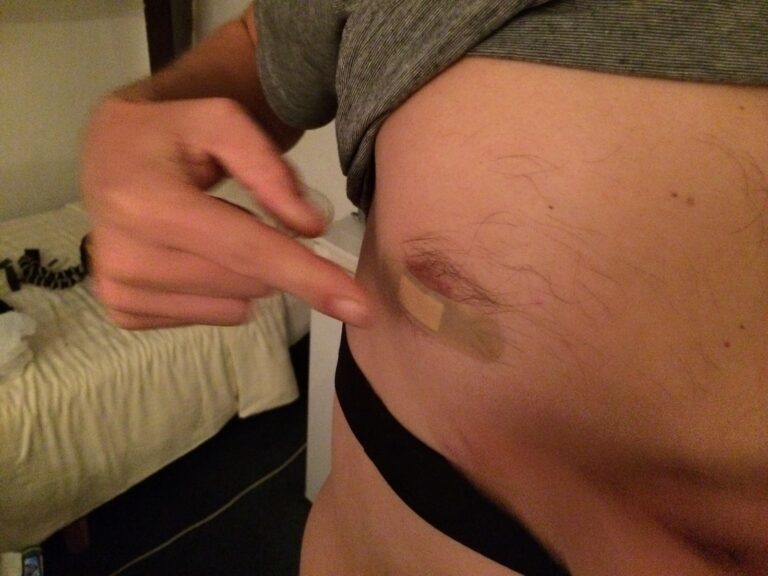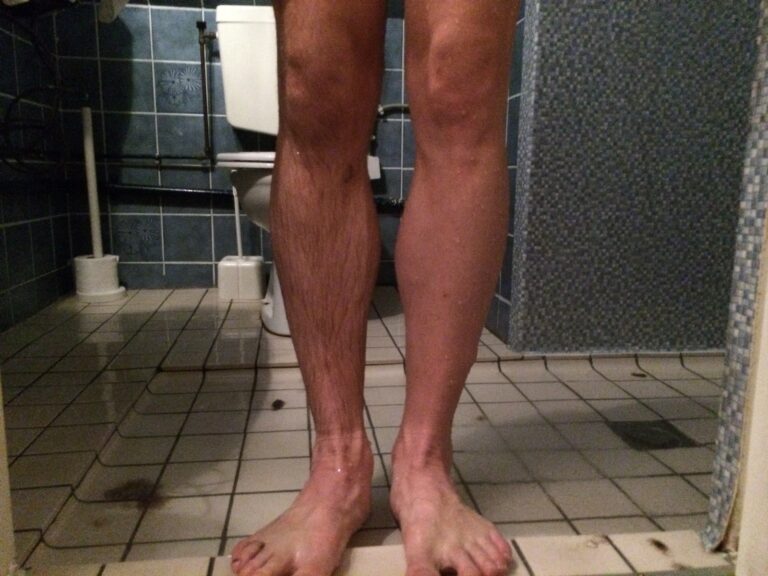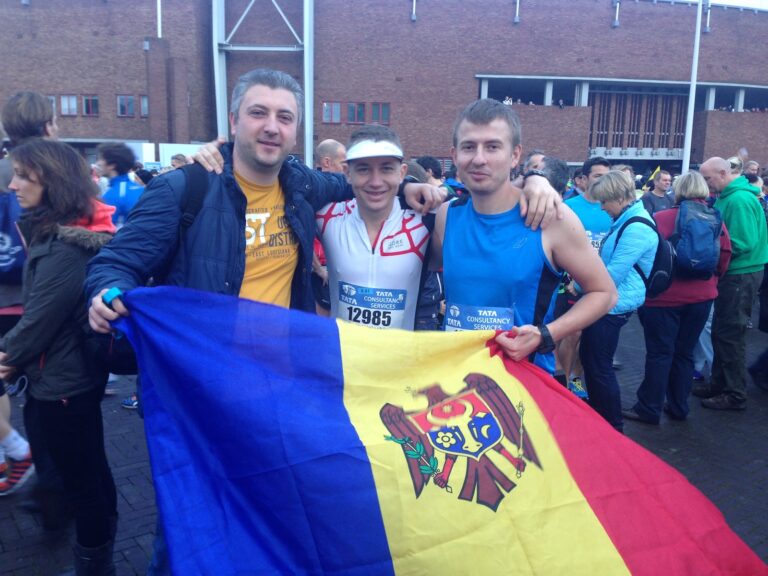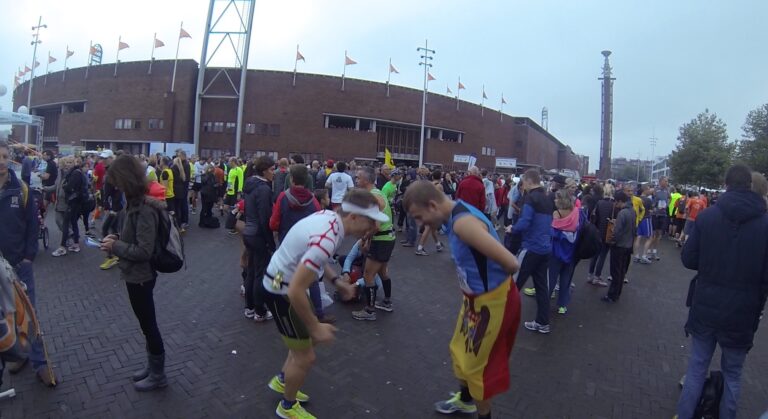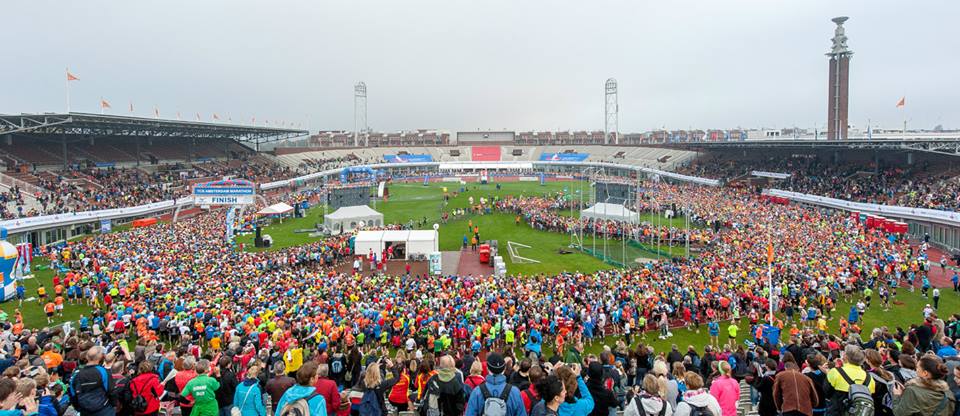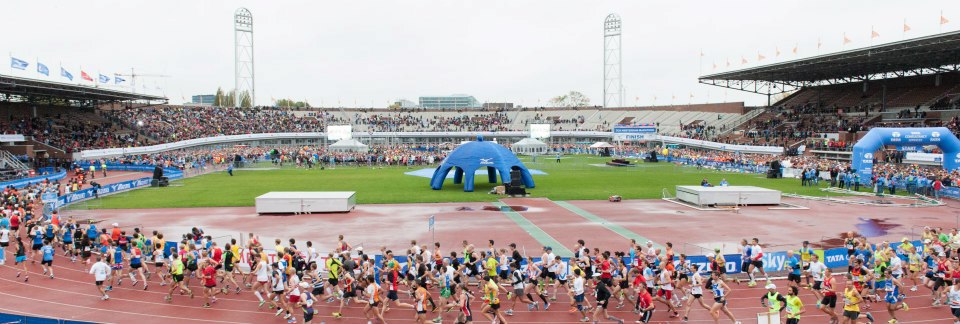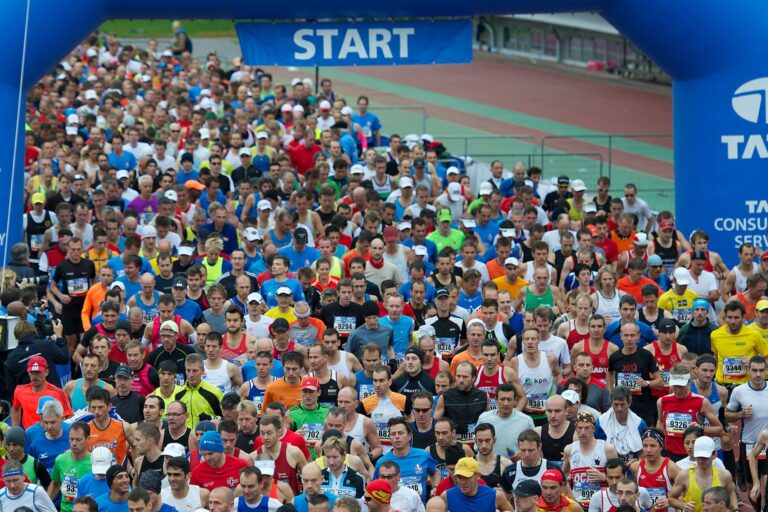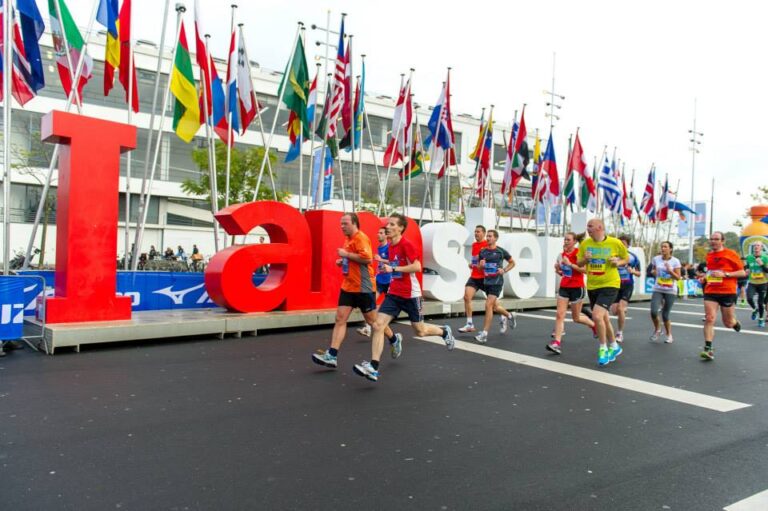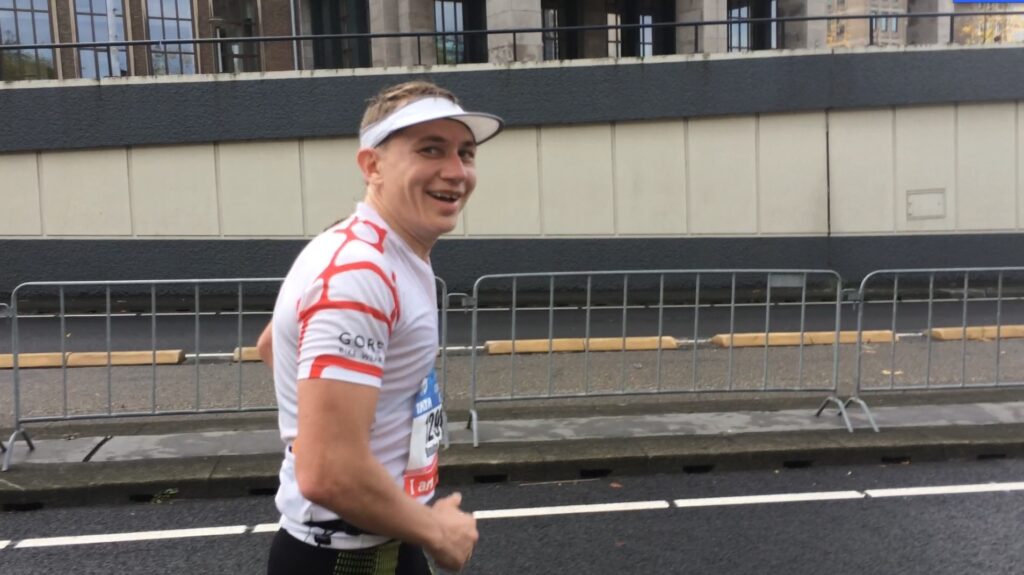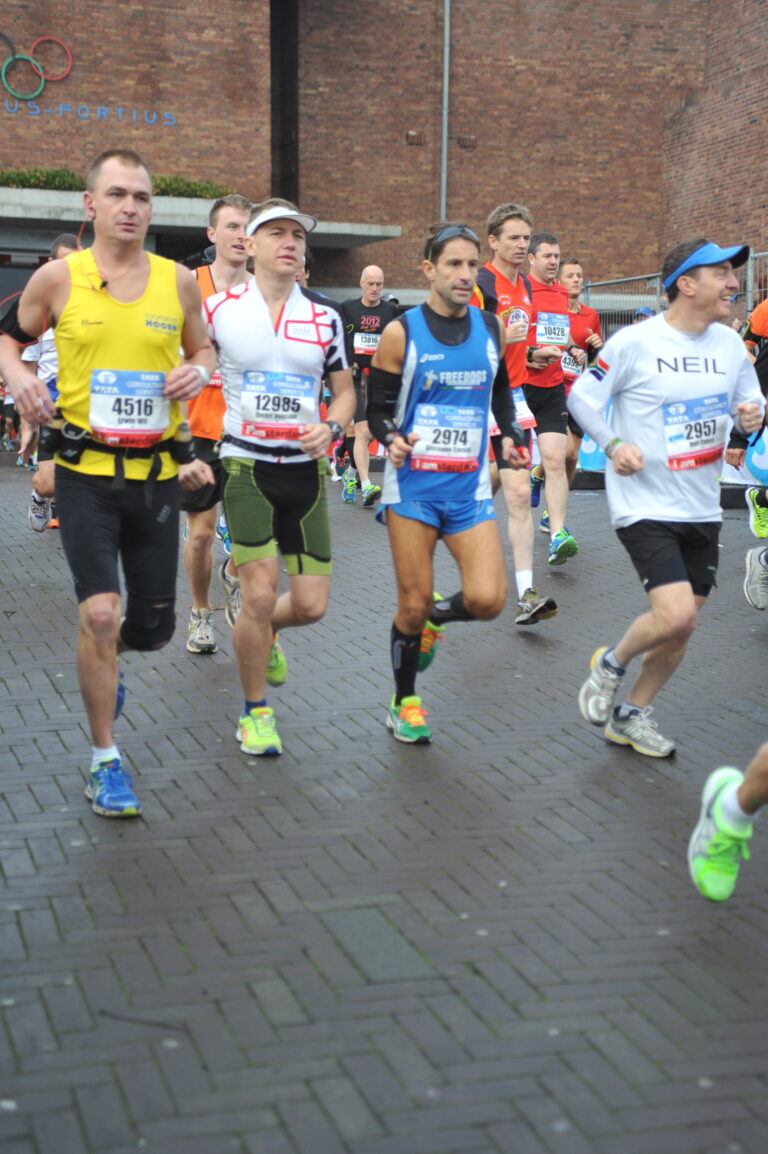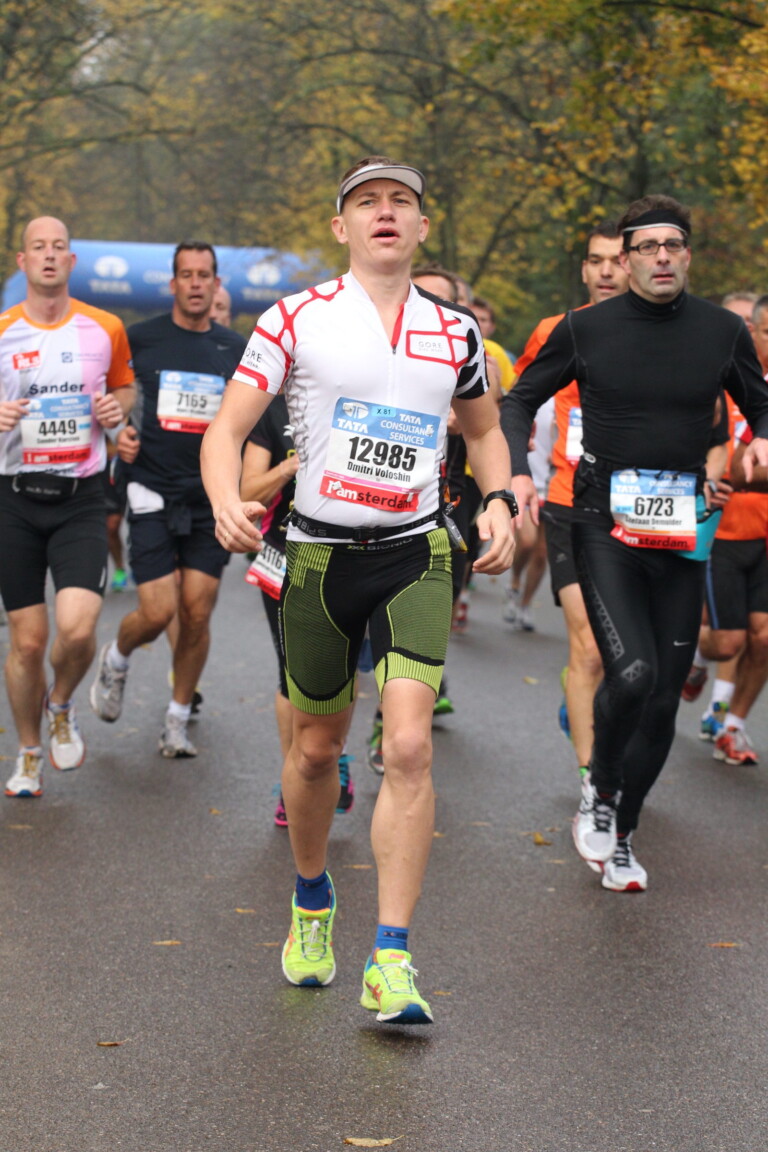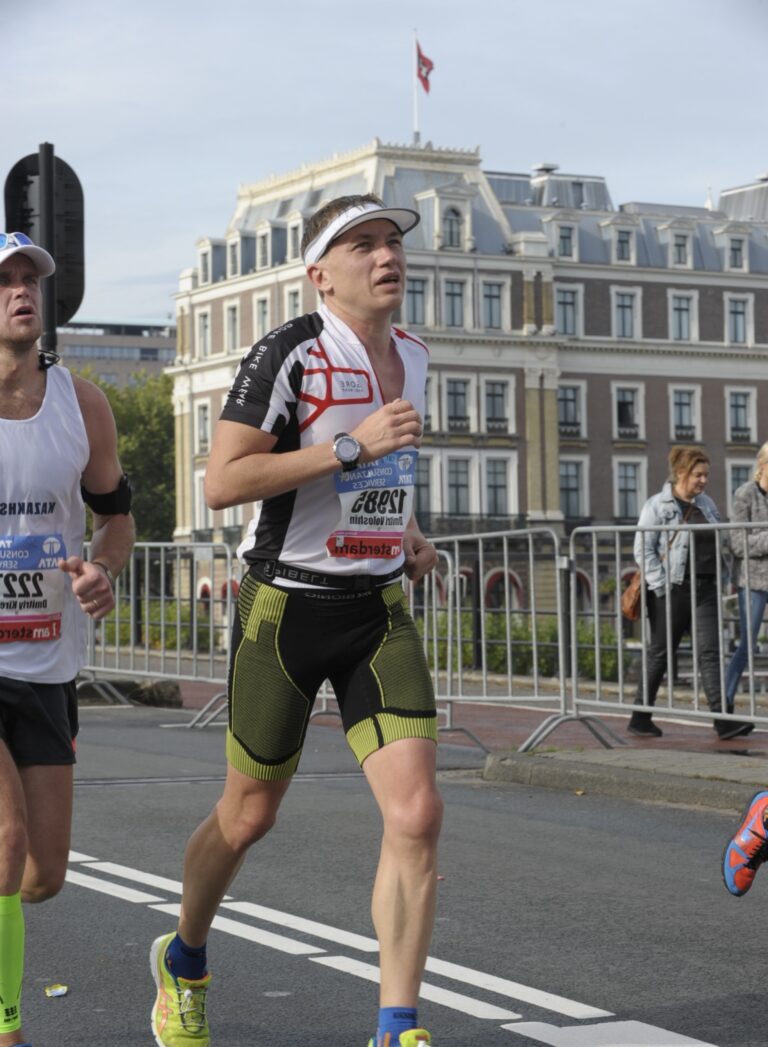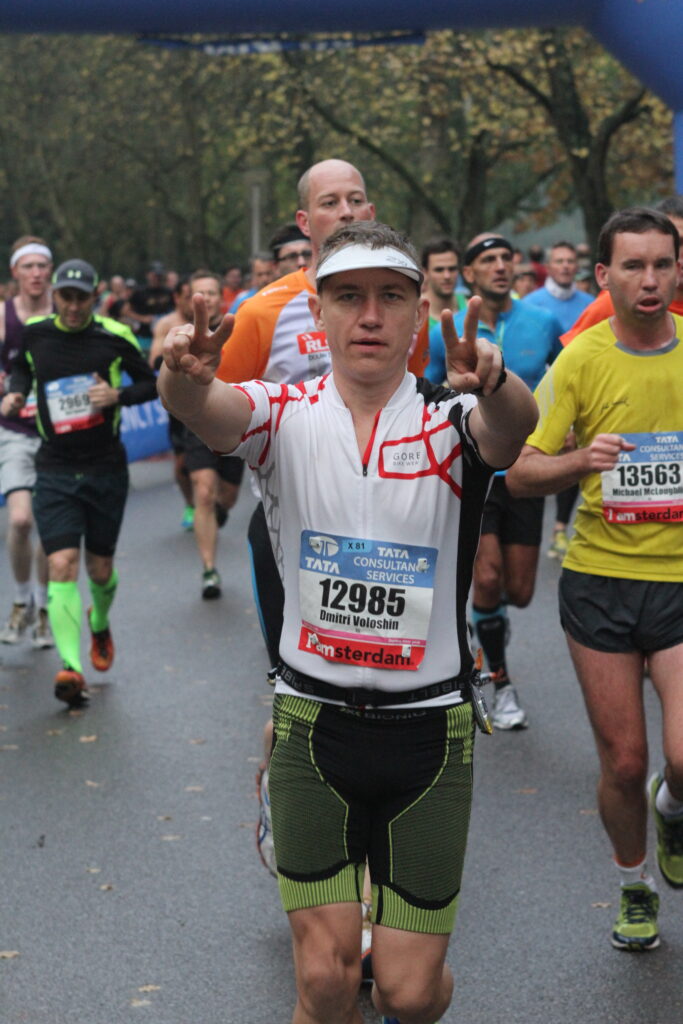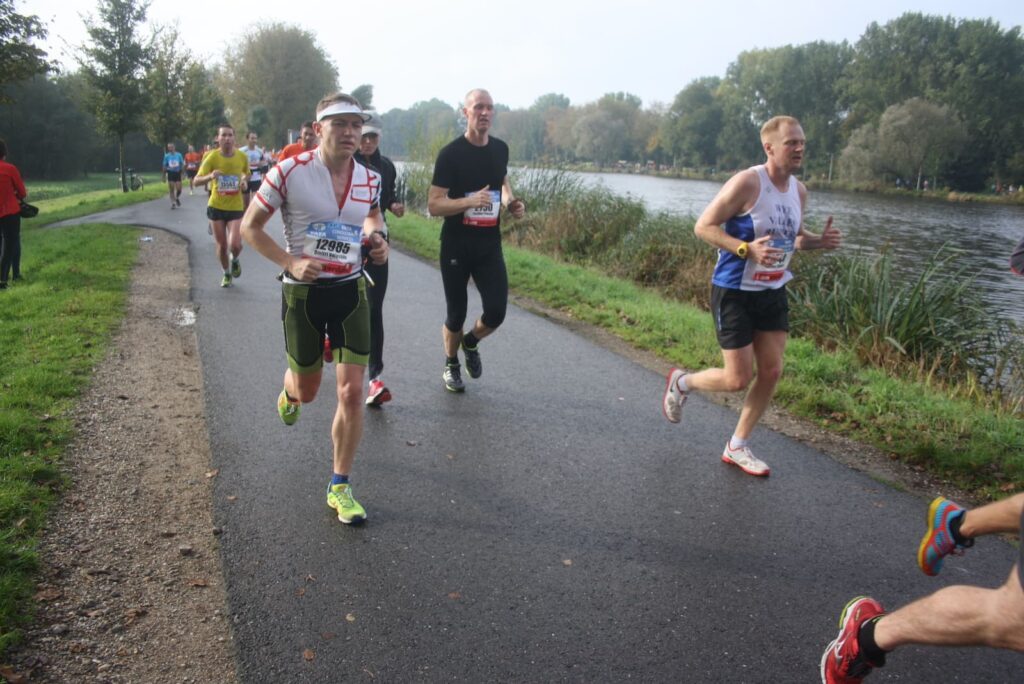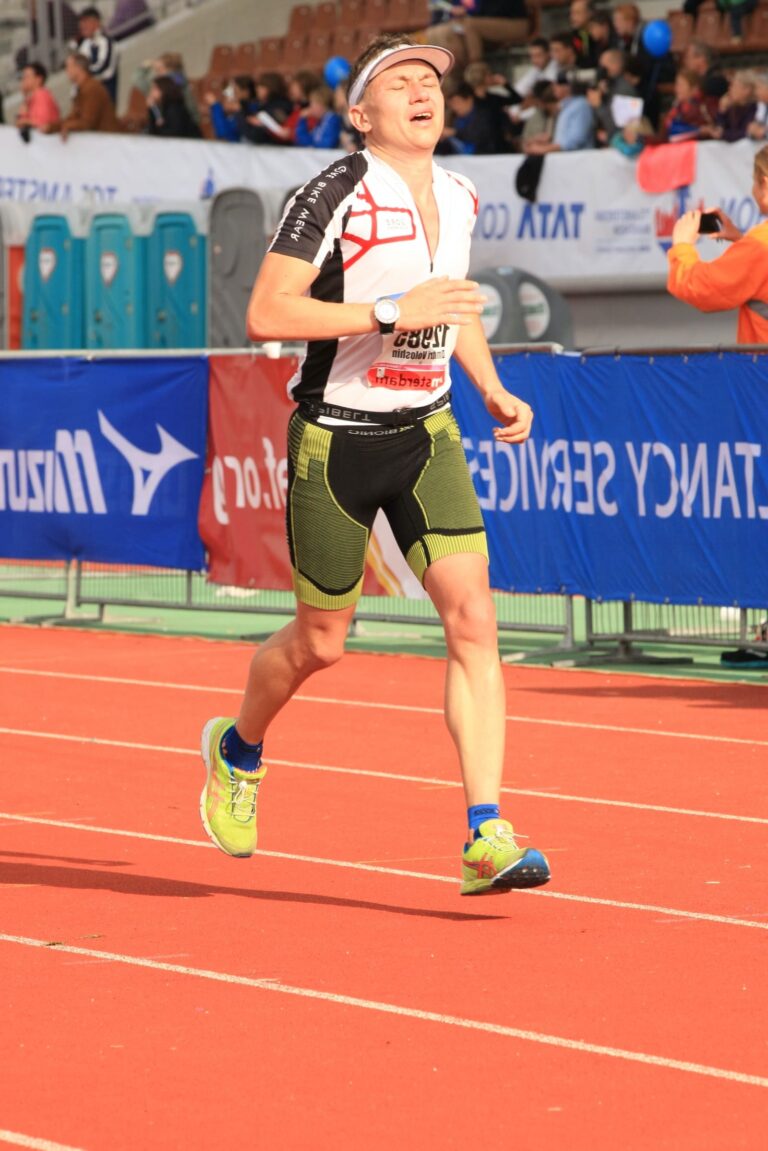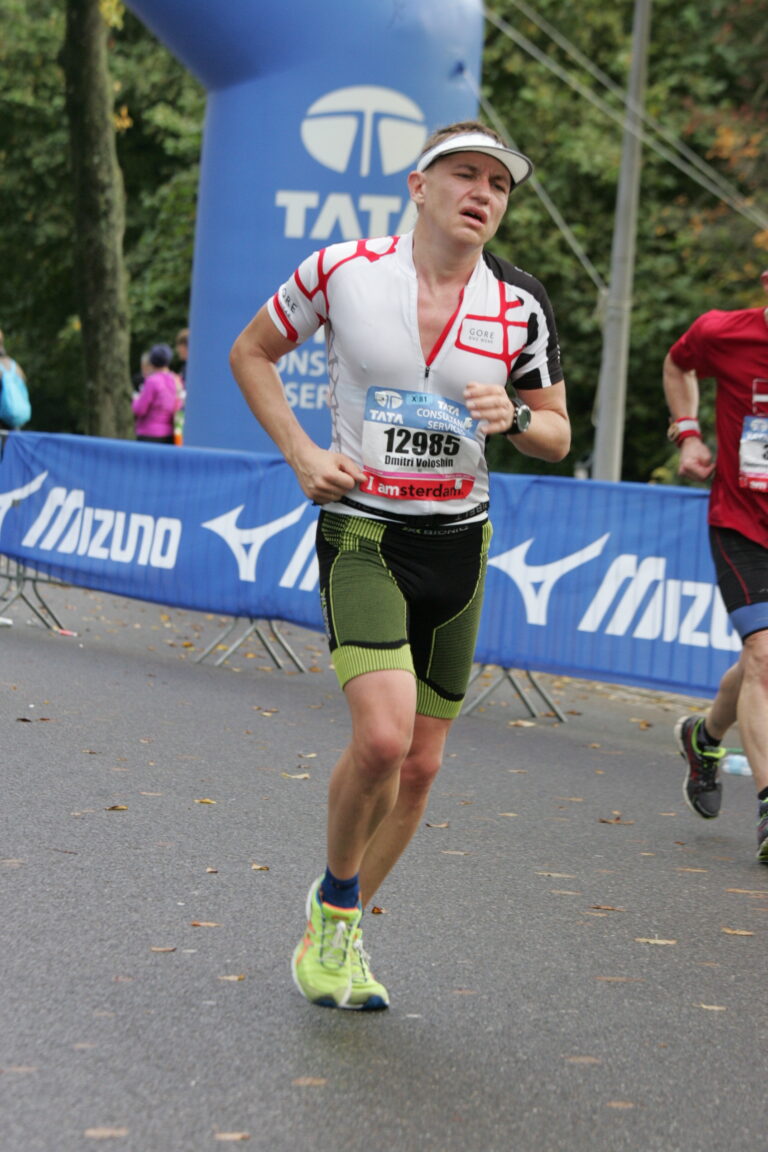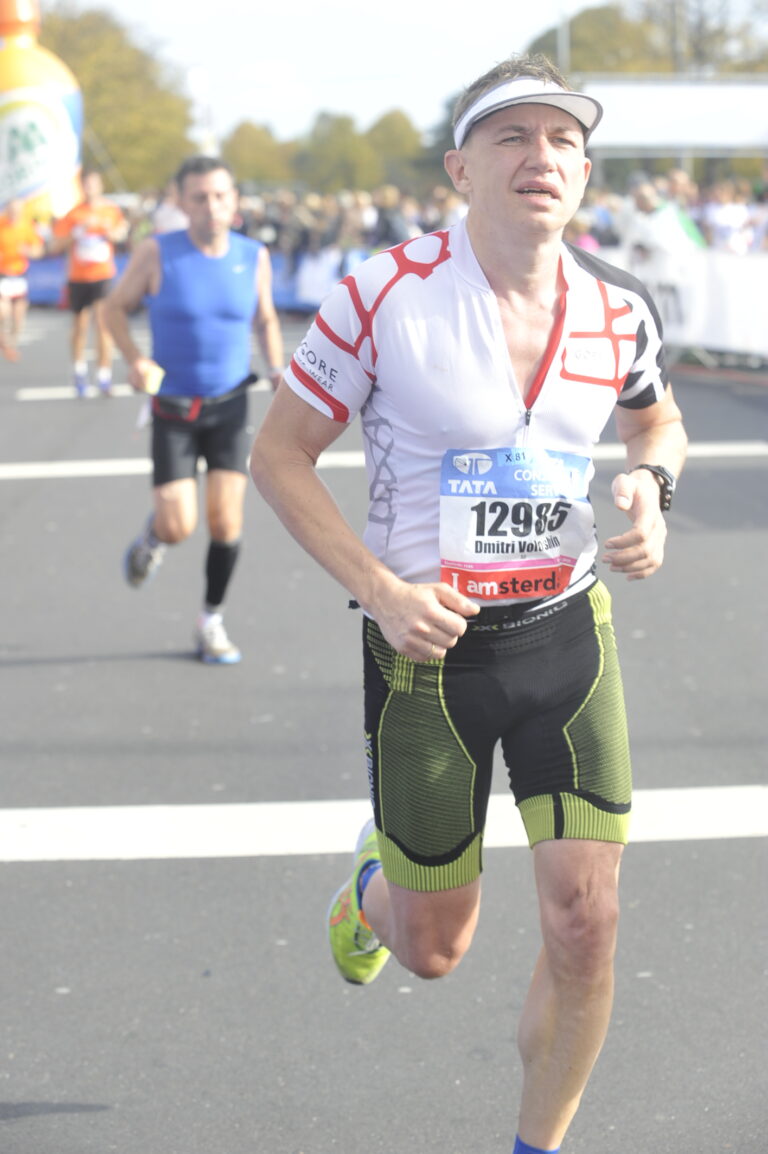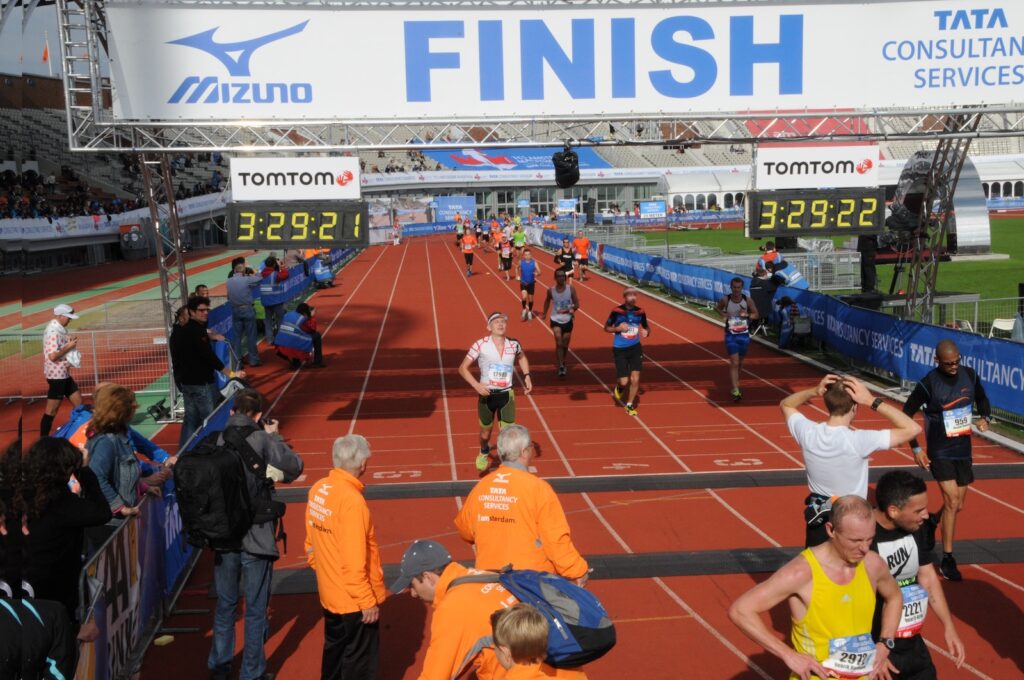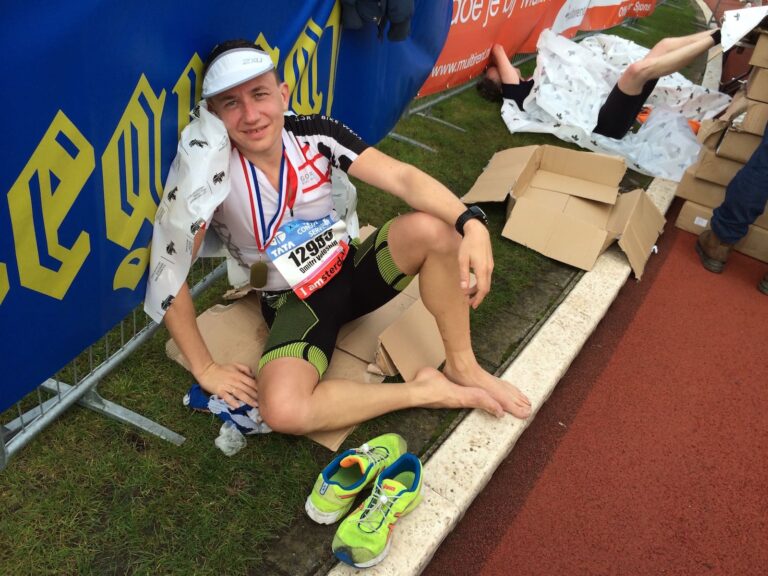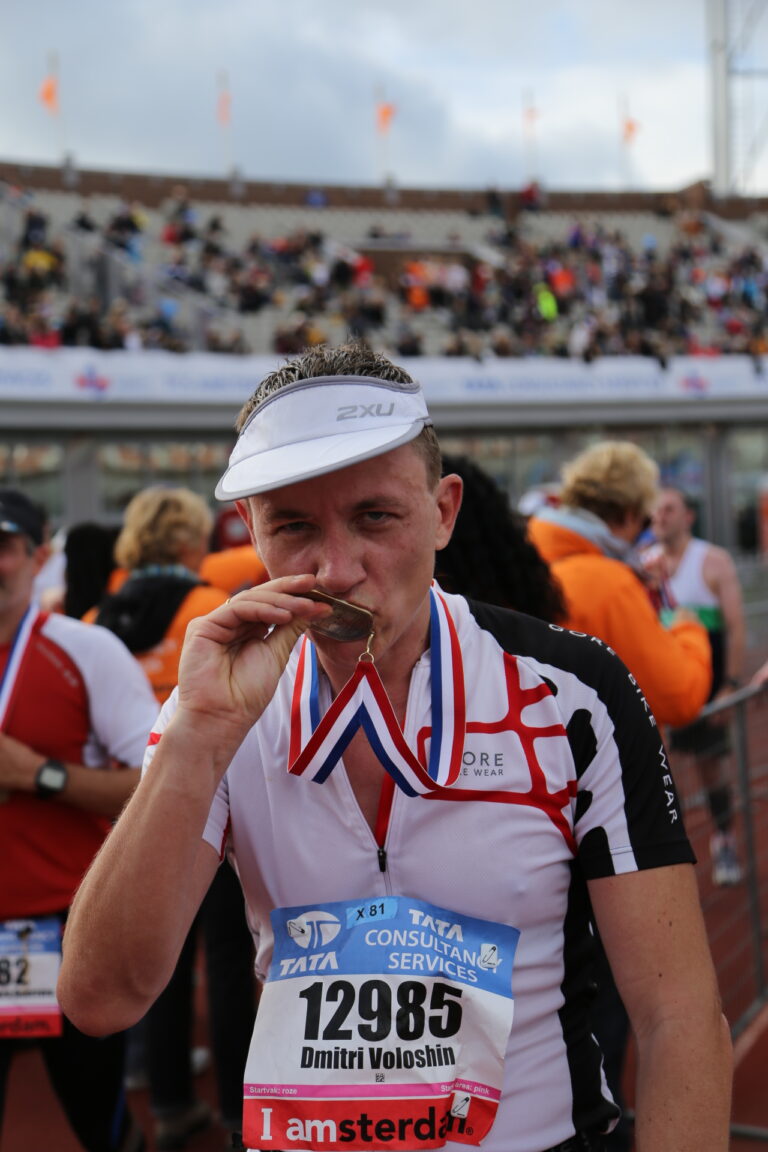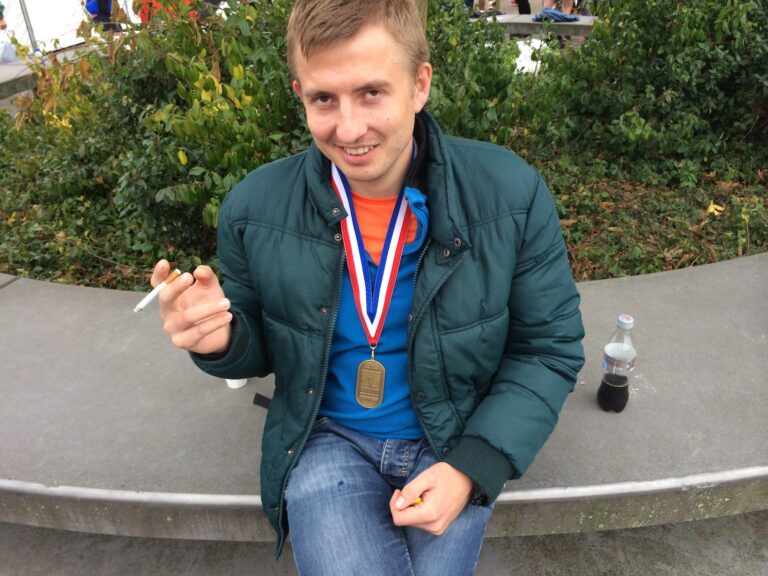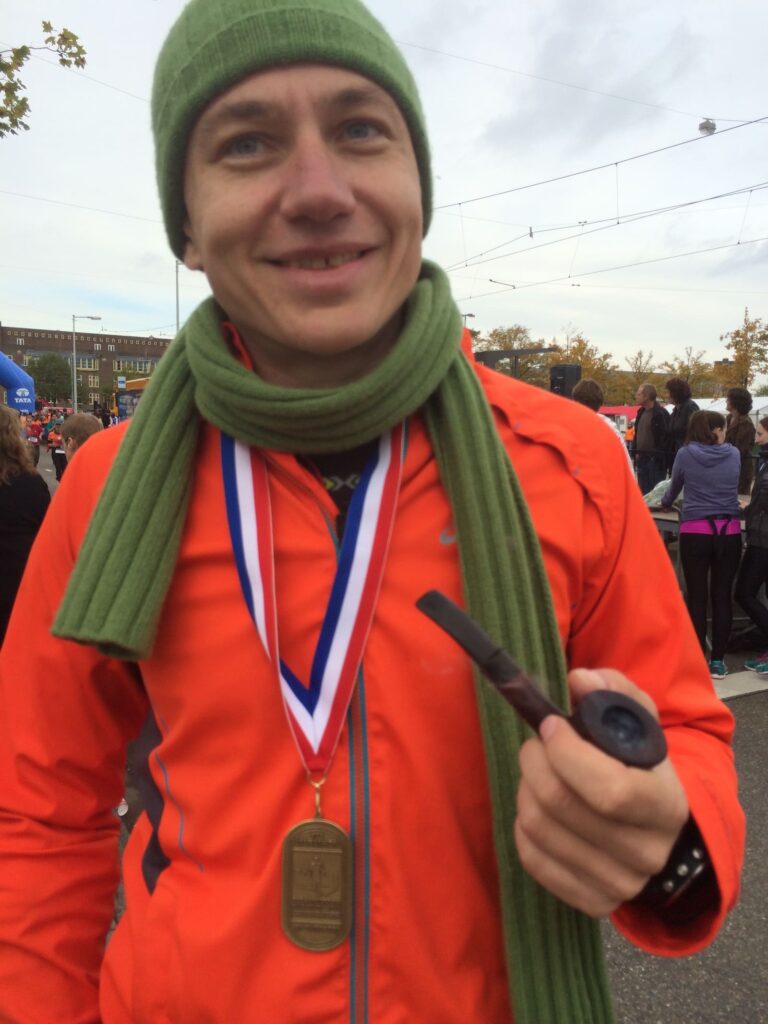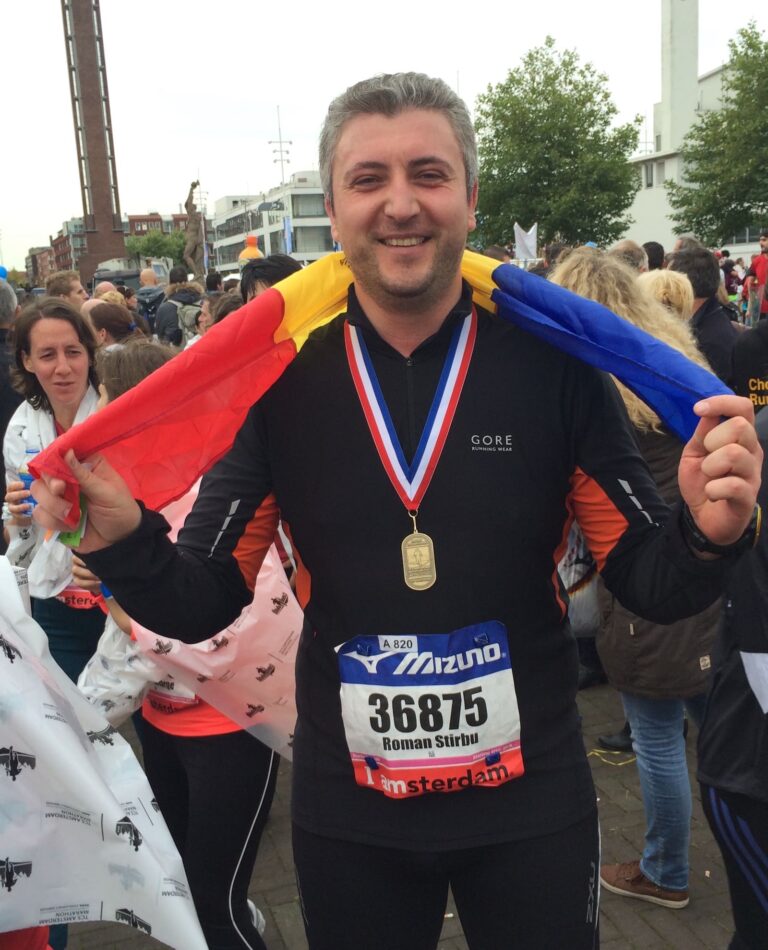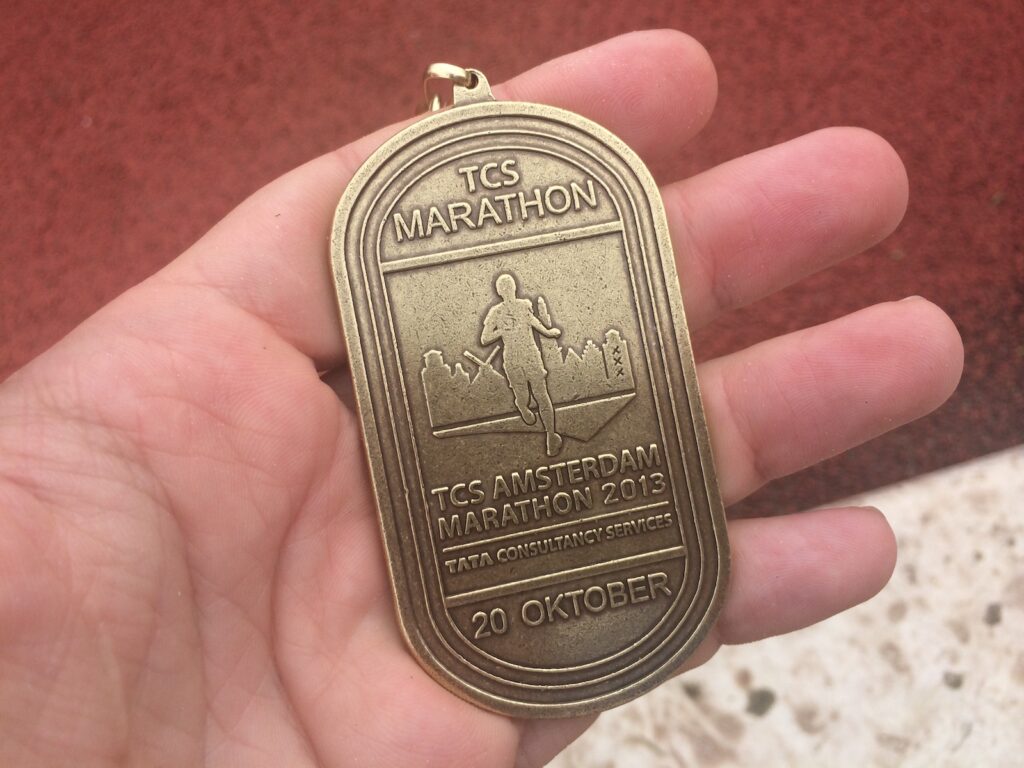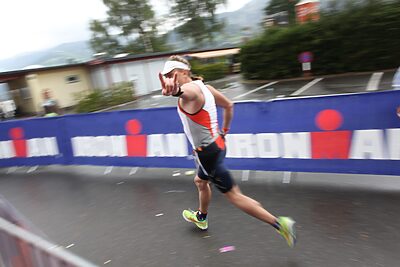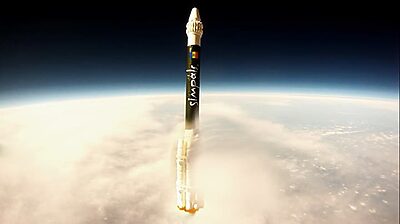Amster
Amsterdam is a city in Holland, where shrooms, marijuana, prostitution and marathons are legalized. It’s a perfect place for a competition. Amsterdam Marathon is one of the most popular in Europe; about 40.000 people gather annually to tread the Dutch land. This time I was heading to the marathon with a company of my friends – athletes, who have also decided to go for a run with me in weekend. Greetings to Roma and Andrew!
By the way, why exactly Amsterdam? It’s not only about the prestige value of this marathon. The point is that half-year ago one of our friends said he was going to visit this country with a sports interest, and we have decided to surprise him by going together. We have registered, and when it came to buy the tickets, we found out that this friend, who has provoked us to all of this, was not going. Well… he still is a good man. However, to be honest, it was a good thing that he did not go – the apartment we lived in, would not be able to fit the four of us. Well, I’ll tell you later about this.
Now about the city. Amsterdam is:
1. Calm and quiet. Nobody is in a hurry, it’s quiet, there’s no music, streets are often empty.
2. Severe. Architecture is laid up in a single sustained – North – German style. It has its face.
3. Small. By size and population it is comparable to Chisinau.
4. Cultured. A huge number of museums, exhibitions and showrooms.
5. Cycling. I have never seen so many cyclists, it’s a named bicycle capital.
6. Free. Legalized drugs, prostitutes and different minorities.
7. Abiding to law at the level of insanity. Locals have told creepy stories about taxes, work, fines, neighbors-whistlers, prisons for entrepreneurs and other hair-raisers
In short, I was not really excited with Amsterdam, it’s nothing like Barcelona or San – Francisco. There are many pretty things, but generally, it was boring. We came to take part into the marathon after all, so we couldn’t try all the charm beauties of the legalized entertainment. Generally, we wandered around the red lights district, admired bored transvestites in their windows, tasted (after all!) different useful and not so useful goodies, but there will come another post about this
About the housing. Amsterdam is famous for its expensive house rent. Therefore, we had no idea what to expect for our 50 euro per day. It is quite a decent sum for Chisinau. But how is it for Amsterdam? We were settled in a tiny room, where 4 beds were standing. There was no space for walking in the room. You should just enter, fall on your bed and go to sleep. You wake up, get dressed, go out (one by one – the stairs are dreadfully narrow) and then go for a walk around the city.
By the way, a fun feature of Amsterdam architecture is the hooks on the facades of buildings. What these are and what do they serve for we were explained later. It appears, due to the narrow ladders, all the furniture is being moved inside the buildings “by air”, through windows, and these hooks are needed for the ropes, used for dragging furniture inside.
We thought these hooks were quite a useful thing. Perhaps, we’ll need them for the transportation of a worn out marathoner after the competition.
Preparation
By the way, I arrived at Amsterdam with an extremely runny nose. Bad luck to have caught a strong cold at Chisinau and took it with me to Holland. On Saturday the situation got worse, fever and cough came in. That’s it, I thought, I wasn’t hoping for 3:30, I doubted I would be able to get to the finish line at all.
Saturday morning our magnificent trinity went on registration. By feet. 3 kilometers. The weather was gloomy, it was cold. Mood really su…
About the Marathon organization. It was great, the Hollanders did their best, but the expo was really bad – small and useless. If on other marathons, for example in Paris, you could find food for athletes at the expo, or buy some sports gadgets with a discount; this time there was practically nothing at all. All-in-all, we hardly found gels and strolled to loading with carbohydrates. In the evening, after eating pasta with condensed milk (favorite carbohydrate bomb) with local Chisinau residents, we went to prepare for the race.
At the hotel, by the already formed tradition, I have shaved my organism, pared my nails, took a bath and, wiping snots, laid down to bed and kept on convincing myself for an hour that I was not sick, and tomorrow I will feel just fine. I fell asleep with a weak hope that I will wake up not so used-up…
Race
It seems incredible, but in the morning I opened my eyes and realized that the sniffles and fever were gone, and my throat wasn’t sore. Did my body give me a chance? It gave some hope on having a normal race, but it was too early to rejoice.
Our breakfast consisted of oatmeal with bread rolls, and we took loperamide (this is for concentrating on race while running, and not having to worry about anything else), and we went on start. The start was located on the Olympic stadium, and it was really impressive.
In the far 1928 during the Summer Olympic Games, the marathoners had finished on this stadium, and since then it became a tradition among the “long distancers”.
We changed our clothes, gave it in, it was chilly…. The health state was satisfactory, we were standing and shaking, and hundreds of marathoners were shaking around us. The entire stadium was shaking.
And here comes the START!
We stop shaking and start running. Considering the mistakes of previous races, I draw no attention to the pace of my neighbors and let them outrun me.
My plan at this time is a risky one – to start running fast enough (4:55 – 5:00 min for a km) and to keep this pace till the end of marathon. And what would it suit me for? Well, I was planning to finish this marathon faster than in 3 hours 30 minutes. Fair and softly goes far… from the finish. It’s not our motto … ????
I risk that at the beginning it will be easy for me, but I will run out of strength on the 25- 30th km, lactate will fill the muscles before time, and I will make it to finish line in 4 hours at a pace of 6:00 – 6:30 at dreadful state.
Marathon is a little like casino, it’s very difficult to guess what exactly you are ready for today, considering the time on latest trainings, the results of previous runnings, the cold that is holding the throat, the atmospheric pressure, temperature, wind, and quantity of glycogen that you have gathered during the last 24 hours. It is impossible to put all these together, so there is always a risk to miscount your forces. There is a spare option – to start slowly and run not so quickly. You will surely get to the finish line, but the result will be a sad one. After all, we didn’t come here for something like this
Yet there is a question – will I manage doing it? On the other hand, the question isn’t whether you can do it or not, it’s in whether you will make up your mind to start! And I started.
0-20 km
In short, I have decided to stake my all and rushed at 5 min. The first tenth has flown smooth and easy. I was studying the neighborhood, musicians (which were not so many), other runners. On the second ten km I decided to accelerate a bit more, because I was feeling surprisingly well. I was running till the twentieth kilometer with a pace of 4:50
20 km
Starting the third tenth, I decided not to slow the pace and to reach the 30-mark in a pace of 4:50. And then to see how it goes. Said and done. But on the 27th kilometer I started to understand that the marathon itself begins only now, because the pace started to slow periodically, and I had to accelerate to lift it up. These were the first signs of fatigue, and the first call for slowing the pace down.
30km
Managing to get to the 30km mark, instead of reasonably reducing speed, I cheated my brain by the decision to maintain the pace up till the 35th km and already after that to run slowly and relax. Strangely, the brain fell for it (1:0 in my favor), and we together with the feet that already have been aching quite considerably, continued our way to finish.
35 km
At the 35th km I offered my brain to hold the pace till the 40th km, and to really relax after this mark. The brain didn’t fall for this for the second time, offered me to stop rushing and take a look at the watch.
My fantastic Suunto Ambit2 watch has a program, which counts time of marathon completion, considering the current pace and completed distance. So, on the 35th kilometer, the watch forecast was showing time 3:27. It meant that if I continue running at the same pace, I will make it into the 3:30, and will have a couple of minutes in reserve.
Therefore, even if right now I run with 5:10, then I will manage to get in three and a half hours. And I slowed down. And that was out the window. Brain exulted – it equalized the score. 1: 1! This was my mistake. And here’s why:
It’s all about the GPS. If you have ever been running with a GPS – watch or phone over a calibrated track, you have surely noticed that actual distance and the data in your device do not coincide. The point is that first of all, you never run by a straight line and by the center of the road, and secondly, the GPS deviates by 10 meters, and it tends to accumulate. In short, at the Marathon, my clock shows finish (42 195 meters), while as the finish line is in about ~ 400 meters. This means that the clock’s forecast is incorrect, and I may not make it on time. Incorrect prediction means that I will have to run additional 400 meters in 2 minutes to fit into three thirty.
39 km
When I realized that I not running late, the finish line was at a 3 km distance, and I was already feeling quite bad. I was hardly holding the pace of 5:10. While as fitting into my plan supposed I would accelerate. And so I did accelerate. My legs turned into two sticks, evenly knocking at the asphalt, pain took hold of all my thoughts, and the brain was demanding me to stop.
Now this was the spot, where the final battle began between me and my mind. The last 20 minutes of Amsterdam Marathon I remember quite blurry, because all the resources were spent on fighting the desire to slow down and stop suffering. The only thing that I remember was thinking about the fact that people do not know the limits of their possibilities, and there is always a bit of strength you can find to go little further, and then a little more, and then some more. And you realize that limits simply don’t exist…
42 km
I reached the finish line with time 3:29:21. Only thirty nine seconds. And I paid a big price for them. It seems nonsense, what do they mean? Was it worth to torture yourself for these seconds? Probably, many of you will consider this nonessential. However, to me exactly these seconds are the essence of sports. Not the health, not the weight, not the high spirits and great state. But namely the seconds, kilometers, the pace and all more and more tough challenges. These are the things that motivate me for being engaged into sports.
It is like at swimming, when doing a stroke, searching support in water with your palm, trying to lean on molecules and atoms of the flow, grope the currents, which allow you to push off from water and swim faster. It is something that is impossible to be controlled by your mind, but you can feel subconsciously that you feel support in water. And no matter how weird it sounds, you really swim faster…
The same thing happens into the competitions – it is important for me to create these atoms, seconds and kilometers of distance to cling to them and move forward
Results
Amsterdam marathon became for me already the fourth serious running competition. Before this one, I took part in the half-marathon at Barcelona, the marathon at Paris and half of Ironman.
By the way, my friends have also shown themselves as athletes from an excellent side. Andrew has completed his first marathon in 4 hours, and Roman ran the half marathon in 2:25.
Roman: “I began running in June, i.e. just a couple of months ago. And I wasn’t planning to participate in this half marathon (which he did run after all). We have been preparing to conquest Mont Blanc, and an important condition for this was to run over 10 km. Therefore, I started to run. And on the top of Mont Blanc we decided to participate altogether in a marathon, as well. In general, I have no idea, whether it is cool or not to run the half marathon. It’s probably cool. For me, personally, this half marathon became an important intermediate stage, because I have decided that I will run the marathon some day, too”.
Andrew: “Loperamide did not help. It did not help 2 times. Therefore, the official result is several minutes worse. Either way, nothing can screw up the euphoria that comes a couple of kilometers before the finish line and maintains several hours later. You are happy! You are full! You are cool! I have not a slightest idea, where the strength comes from, but this is already not the second and not third breath. You might not feel your legs, arms, neck, but you fly. And this is fucking great!!!”
Conclusions
1. I realized that the human body is not simply able to do a lot, but it’s capable in enduring much, much more than you might even think of.
2. You can make deals with your brain. It can even be screwed over. I felt horribly the day before the behind day before start. I was ill. And I was ill the next day after the marathon, as well. But at the marathon day I was feeling fine. I am not sure, it might have been some kind of self-deception or self-hypnosis, but my organism mobilized. Maybe, I have been feeling horrible at the Marathon day, too, but I forced my brain to believe that I was able to run the marathon. And the brain bought it. And forced the body to believe it. And I ran. In a word, your body obeys to your mind. Now, I know this for sure.
3. Never mix shrooms with weed.
Fresh season
With this marathon I close the season of 2013. Next year I am going to run on water, escape from prison, become an Ironman and something more. You will have to wait till next year to figure what all these mean ????
The medal that was won with sweat and snot…
The results:
Distance: 42 195 m
Time: 3:29:21
Average tempo: 4:57 (12.1 km/h)
Average pulse: 161
Pulse price: 783 (heart beats per km.)
Calories: 2365
VO2 max: 59
Place in general classification: 2168 (out of 11 290)
Place in age-related group 376 (out of 1430)
Was faster than 81% of participants.
